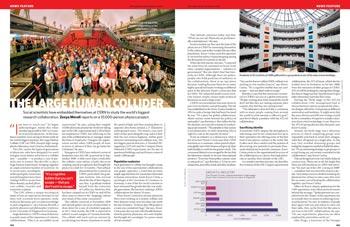 Many biotechnology stocks fell on Tuesday as investors struggled to understand the impact of a ruling that threw out parts of two gene patents and called into question thousands more.
Many biotechnology stocks fell on Tuesday as investors struggled to understand the impact of a ruling that threw out parts of two gene patents and called into question thousands more.
Stock market losses were muted, with two major indexes that track the shares of the industry falling by less than 1 percent each. In part, that was because biotechnology executives hastened to reassure their investors that the ruling would not necessarily undermine their businesses, at least in the short run.
But the executives themselves were struggling on Tuesday to figure out what the long-term impact would be. Biotech companies spend billions every year trying to develop new tests and treatments based partly on genes they have isolated and patented.
In a far-reaching ruling, Judge Robert W. Sweet anticipated a negative reaction from the industry. In a footnote of his 152-page ruling, he discounted fears that invalidating such patents would decimate the industry.

 On Monday, I [
On Monday, I [ LONDON, Mar 30, 2010 (BUSINESS WIRE) -- Global executives admire Google, Apple and GE as the world's most innovative companies, a study from global management consultancy Arthur D. Little has revealed. In its bi-annual survey of 400 global companies, the consultancy compared innovation capacity against the average by industry.
LONDON, Mar 30, 2010 (BUSINESS WIRE) -- Global executives admire Google, Apple and GE as the world's most innovative companies, a study from global management consultancy Arthur D. Little has revealed. In its bi-annual survey of 400 global companies, the consultancy compared innovation capacity against the average by industry.
 Does start-up financing differ for minority-owned businesses? Until recently, this has been a difficult question to examine because most data on small businesses looked at existing businesses of varying ages. But the development of the Kauffman Firm Survey (KFS) – an effort to track a sample of firms founded in 2004 over time – has allowed researchers to explore that question.
Does start-up financing differ for minority-owned businesses? Until recently, this has been a difficult question to examine because most data on small businesses looked at existing businesses of varying ages. But the development of the Kauffman Firm Survey (KFS) – an effort to track a sample of firms founded in 2004 over time – has allowed researchers to explore that question. Can entrepreneurship be taught? This is a question I get asked every other week. Some people are quite sceptical about the graduate entrepreneurship programs around the world, while others embrace them.
Can entrepreneurship be taught? This is a question I get asked every other week. Some people are quite sceptical about the graduate entrepreneurship programs around the world, while others embrace them. Last June, President Obama announced in Cairo, Egypt that the U.S. government will host a Summit on Entrepreneurship to identify how we can deepen ties between leaders, foundations, and entrepreneurs in the U.S. and Muslim communities around the world. Throughout April leading up to the April 26th summit, I will comment on the state of entrepreneurship in some of the nations participating which I will be attending in the hope of prompting further observations from readers.
Last June, President Obama announced in Cairo, Egypt that the U.S. government will host a Summit on Entrepreneurship to identify how we can deepen ties between leaders, foundations, and entrepreneurs in the U.S. and Muslim communities around the world. Throughout April leading up to the April 26th summit, I will comment on the state of entrepreneurship in some of the nations participating which I will be attending in the hope of prompting further observations from readers. The saving of Luton and indeed of Britain, (restoring our 'Great' prefix) would be the New Technology Economic Model, a 'model' which has been identified around the world with USA, Canada and Malaysia taking a keen interest. The basic principle is the use of technological innovation to drive the economy. Today, the US has an economic stimulus package in basic R&D, biomedical research facilities and essential broadband infrastructure as a response to their economic environment. A major research university can provide a huge economic boost to a regional economy with the University of Calgary (Canada) benefiting Alberta economy about $50 million per year circa 1994, including faculty and professional staff knowledge transfer. Spin-off companies commercialise intellectual property from university laboratories and are significant drivers of innovation appearing to effectively transfer technology out of universities, leading to job and wealth creation. However to contribute to economic growth, they must survive and succeed. Canada reports over 80% of their spin-off companies are still in business five years from start-up.
The saving of Luton and indeed of Britain, (restoring our 'Great' prefix) would be the New Technology Economic Model, a 'model' which has been identified around the world with USA, Canada and Malaysia taking a keen interest. The basic principle is the use of technological innovation to drive the economy. Today, the US has an economic stimulus package in basic R&D, biomedical research facilities and essential broadband infrastructure as a response to their economic environment. A major research university can provide a huge economic boost to a regional economy with the University of Calgary (Canada) benefiting Alberta economy about $50 million per year circa 1994, including faculty and professional staff knowledge transfer. Spin-off companies commercialise intellectual property from university laboratories and are significant drivers of innovation appearing to effectively transfer technology out of universities, leading to job and wealth creation. However to contribute to economic growth, they must survive and succeed. Canada reports over 80% of their spin-off companies are still in business five years from start-up. 

 Two weeks from now in Deloitte's downtown Toronto office towers, 14 Canadian technology entrepreneurs will go on a dream date of sorts, hoping to hook up with eight Boston-based venture capitalists flying in for the day to scope out the talent.
Two weeks from now in Deloitte's downtown Toronto office towers, 14 Canadian technology entrepreneurs will go on a dream date of sorts, hoping to hook up with eight Boston-based venture capitalists flying in for the day to scope out the talent.
 Nearly every tech-focused venture capital firm in the Seattle area is
tossing financial support behind
Nearly every tech-focused venture capital firm in the Seattle area is
tossing financial support behind  Many of us are "burned out" from all the health care legislative
battles on the hill as well as the non-stop media analysis. Among what
appeared to be out of control unsupervised children fighting in our
government sandbox, there was one group of heroes working above and
beyond the call of duty.
Many of us are "burned out" from all the health care legislative
battles on the hill as well as the non-stop media analysis. Among what
appeared to be out of control unsupervised children fighting in our
government sandbox, there was one group of heroes working above and
beyond the call of duty.  "I am here to watch you." So began anthropologist Arpita Roy when introducing herself in 2007 to a roomful of particle physicists. At the time, those scientists were racing to finish work on the world's biggest machine, the Large Hadron Collider (LHC) at CERN, Europe's high-energy physics laboratory near Geneva, Switzerland.
"I am here to watch you." So began anthropologist Arpita Roy when introducing herself in 2007 to a roomful of particle physicists. At the time, those scientists were racing to finish work on the world's biggest machine, the Large Hadron Collider (LHC) at CERN, Europe's high-energy physics laboratory near Geneva, Switzerland. Another
Another 

